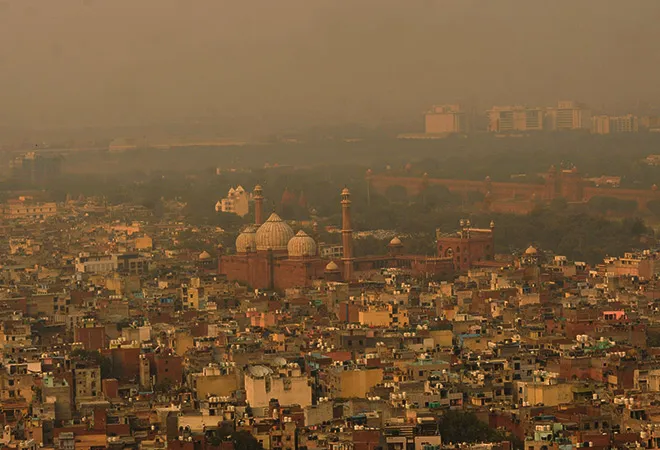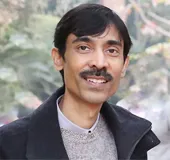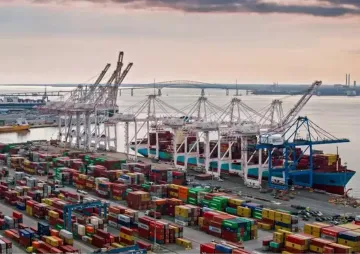
Delhi has experienced numerous changes in spatial development since India’s independence in 1947. Around that time, the city’s population was
less than a million, and an urban (or master) plan for New Delhi prepared by Edwin Lutyens had already been applied in pre-independence era for guiding development.
However, with immigration of people following country’s partition, Delhi’s population almost
doubled by 1951, and it became necessary to make arrangements for new residents. As term of Lutyen’s plan had already expired, and a master plan for the next period had not been prepared, new developments in the form of townships, rehabilitation colonies, office blocks, facilities, were undertaken in various parts of Delhi in an adhoc manner, which led to haphazard growth of city.
By 1962, Delhi Development Authority (DDA) prepared the
first master plan for a twenty year period (i.e., 1961-81) to addresses emerging problems. This plan, prepared with assistance of Ford Foundation, was based on assessment of existing housing and infrastructure deficiencies. Before finalisation, objections and suggestions were invited from public and other stakeholders. For undertaking planned development, land was acquired on a large scale, and the entire process was led by public sector.
With passing time, Delhi continued to experience changes. The city was fast becoming a major hub of activities and investment, and attracted people from many parts of the country. Further, preparations for 1982 Asian Games were underway, which involved construction of numerous hotels, flyovers, stadiums, games village, etc. By the time the term of first master plan ended in 1981, decadal population growth was at its peak (i.e.,
53 % growth during 1971-81).
The increasing population and economic activities caused a number of problems, i.e., shortage of houses; proliferation of slums, unauthorised colonies, encroachments; increasing gap between service demand and supply (water, power, sewerage, waste); establishment of hazardous industries; growth of motor vehicles and traffic congestion; air and water pollution; reduction of open and green spaces; neglect of heritage; etc.
The
second master plan came into effect only by 1990 and was for the period 1981-2001. In-migration, population growth, and negative consequences of urbanisation were major challenges at that time, and hence, the plan laid emphasis on planning Delhi as per
Regional Plan for National Capital Region (NCR). The regional plan, approved by NCR Planning Board in 1988, recommended creation of work opportunities in rural and urban settlements situated in the region adjoining Delhi (comprising parts of Haryana, Rajasthan, and Uttar Pradesh) as well as development of regional networks, infrastructure and facilities, for reducing migration to Delhi.
With respect to Delhi, the second plan called for increasing population holding capacity (through high density development) and extension of urbanisable limits {through development of sub-cities (Rohini, Dwarka, Narela), and new residential colonies (Vasant Kunj, Sarita Vihar, Dhirpur)}. The plan also recommended for decentralisation of city centre, development of multi-modal MRTS corridor, peripheral expressway and freight complexes, shifting of hazardous and noxious industries, protection of resources and environment, conservation of heritage, and protection of Lutyen’s Bungalow Zone.
In early 1990s, the process of economic reforms and liberalisation were initiated by Indian government, and since public agencies were lagging behind in supply of serviced land, the urban development ministry advised DDA to explore the possibility of involving private sector in development of shelter and infrastructure. Around the same time (1989), Delhi government also took steps for developing a
metro rail system on a public-private-partnership (PPP) basis for solving problems of travel, congestion, and vehicular emissions in the city. The Delhi metro rail eventually began operations from 2002 onwards, and the rail network is being extended in phases within the city and the suburbs.
Another step undertaken by the urban ministry in 1996 was preparation of Urban Development Plans Formulation and Implementation (
UDPFI) guidelines. It was realised that master plans are deficient in many ways, and proper implementation is lacking. Hence, guidelines were prepared to assist administrators and planners in formulating better plans, and to ensure that these are implemented effectively.
By 1991, Delhi’s decadal growth rate of population began to
decline. From 53 percent in 1971-81, it came down to 51 percent in 1981-91, and to 47 percent in 1991-2001. The most significant decline was observed during 2001-11 when growth rate fell to 21 percent.
An assessment of census population data reveals that absolute population of Delhi is growing at a slower pace than before, and growth is occurring in urban centres situated in neighbouring states. For example, cities of Faridabad and Gurugram in Haryana, and Ghaziabad and NOIDA in Uttar Pradesh have become the new growth centres.
However, there is a huge difference in
population size of Delhi (16.7 million in 2011) and neighbouring cities (about one to two million). Moreover, Delhi has major functional linkages with settlements situated in the surrounding region, and there is tremendous movement of people and motor vehicles everyday in the entire region (popularly known as NCR). Today, NCR has become the
most populous urban region in India.
Considering population trends, functional linkages, and emerging local and regional challenges of urbanisation, the
third master plan of Delhi was prepared and notified in 2007. It offers a perspective for 2001-21, and the vision is to “make Delhi a global metropolis and a world-class city”.
As per third plan, Delhi’s projected population for 2021 is 23 million, and the plan offers proposals for meeting their housing, infrastructure and service needs. Further, solutions to overcome problems in various urban sectors are provided, including land, shelter, housing for poor, trade and commerce, industry, environment, built heritage, transport, social and physical infrastructure, etc. For ensuring balanced distribution of population, following three policy measures have been proposed:
(i) Deflect population in NCR towns by maximising economic opportunities outside Delhi, planning and regulating development along highways, accelerating development of urban and rural areas in the region;
(ii) Increase population holding capacity within Delhi through redevelopment and modified development norms, i.e., by enhancing floor area ratio (FAR) and building height, allowing mixed use in residential areas; and
(iii) Accommodate population in planned new urban extensions, such as areas along main transport corridors and near already urbanised areas at the periphery of Delhi.
For implementation, the plan recommends optimal utilisation of public and private resources in land assembly, development and housing; and decentralised local area planning by participatory approach.
In 2011, based on a
mid-term review, several modifications were made in the third plan, such as: reserving 15 percent FAR for economical weaker sections (EWS) in residential areas; increasing FAR of education facilities, hospitals, hotels, shopping centres, markets; introduction of land pooling guidelines; introduction of transit oriented development (TOD), etc.
During the period of third master plan (2001-21), many Indian cities experienced spatial growth. These became more populous, dynamic, and their requirements of infrastructure and basic services changed. Considering newly emerging phenomena and challenges, need was felt for including the dimension of ‘region’ in the master plan preparation process. This led to revision of UDPFI guidelines of 1996, which were re-named as “Urban and Regional Development Plans Formulation and Implementation (
URDPFI) Guidelines, 2014”.
Presently, Delhi’s fourth master plan is under preparation, which would offer a perspective for next twenty years, i.e., 2021-41. The
DDA website and
media report that online consultations on a wide range of topics are in progress with a diverse group of people - residents, resident welfare associations (RWAs), market and traders associations (MTAs), youths, persons with disabilities, slum dwellers and residents of unauthorised colonies, villagers, professional bodies, etc., and a draft plan would be available by December 2020. In addition, an interactive microsite namely, “Public Engagement Portal for MPD-2041”, has been created by DDA for ensuring greater public participation in the planning process. It is also expected that the plan preparation process will benefit from URDPFI, 2014 guidelines.
As DDA attempts to develop improved policies and planning strategies for guiding future development in the national capital, there is concern among Delhiites over the success of these efforts. In their opinion, previous plan initiatives have not produced desired results and
quality of life has deteriorated with time, i.e, peri-urban areas are growing haphazardly, living conditions in slums and unauthorised colonies are abysmal, transport corridors are chocked, parking in residential colonies is a nightmare, footpaths and cycle lanes are not available, waste management is deficient, and air quality is very poor. Furthermore, adverse effects of Covid-19 pandemic on human life and activities require substantial changes in future planning for Delhi. The current plan preparation process is a good opportunity for DDA to propose effective planning solutions for contemporary and future problems posed by urbanisation.
The views expressed above belong to the author(s). ORF research and analyses now available on Telegram! Click here to access our curated content — blogs, longforms and interviews.



 Delhi has experienced numerous changes in spatial development since India’s independence in 1947. Around that time, the city’s population was
Delhi has experienced numerous changes in spatial development since India’s independence in 1947. Around that time, the city’s population was  PREV
PREV


